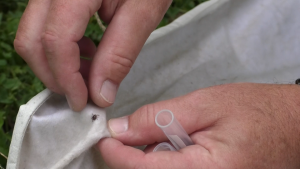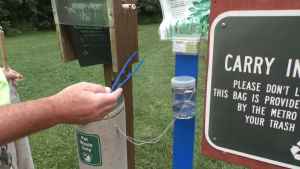News
As tick-borne diseases spread rapidly across Ohio, researchers call on the public for help
By: Haley Swaino
Posted on:
COLUMBUS, Ohio (WOUB) — Neal Sargeant drags a one-meter piece of cloth through the tall grass.
After walking a few feet, he stops, kneels and flips over the fabric.
“And just like that, he’s ours,” Sargeant says. Attached is an American dog tick.

Collection efforts like this will help researchers learn how and why tick populations are spreading. And that can help raise public awareness about tick-borne diseases.
Ohio has seen a 35-fold increase in the number of Lyme Disease cases over the past 13 years, according to the Ohio Department of Health.
Dr. Timothy McDermott has been tracking this increase at the Ohio State University Extension in Columbus.
“The amount of positive cases are going through the roof,” McDermott said. “Generally, the diseases (ticks) vector can be just absolutely devastating.”
McDermott said one of the worst parts about this uptick is that the people most diagnosed with Lyme Disease are children 5 to 14 because they just don’t know or actively practice tick-safe behaviors.
“We simply haven’t gotten the public health knowledge to match the speed of tick expansion,” McDermott said.
This is where the tick drags come in. The number of ticks collected on the fabric allows researchers to determine the tick population density in an area.
“What we hope is if we can identify exactly when ticks are most active and where, that’s going to allow us to give a much more accurate guidance not only for people to practice tick safe behaviors, but for healthcare providers to know where the highest risks are,” McDermott said.

And several parks in Ohio have installed tick collection stations that provide visitors with tweezers to remove ticks and a small jar of alcohol to place them in.
“About every month or every couple of weeks a representative will come and collect those ticks,” Sargeant said.
The insights gathered through all this monitoring will help save people’s lives.

